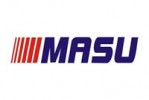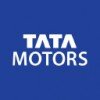Filter interviews by
Jl Autoparts Production Engineer Interview Questions and Answers
Jl Autoparts Production Engineer Interview Experiences
1 interview found
I applied via Approached by Company and was interviewed before Sep 2021. There was 1 interview round.
(3 Questions)
- Q1. What is iso and iatf
- Ans.
ISO and IATF are international standards for quality management systems.
ISO stands for International Organization for Standardization
IATF stands for International Automotive Task Force
ISO 9001 is a standard for quality management systems applicable to all industries
IATF 16949 is a standard for quality management systems specific to the automotive industry
Both standards focus on continuous improvement and customer satis
- Q2. What is production planning
- Ans.
Production planning is the process of organizing resources and activities to achieve production goals efficiently.
Determining production goals and objectives
Estimating resource requirements
Scheduling production activities
Monitoring production progress
Adjusting plans as necessary
Examples: creating a production schedule for a manufacturing plant, planning a film shoot
- Q3. What about ur self and experience
Interview Preparation Tips
Top trending discussions






Interview questions from similar companies

An aptitude test is designed to assess an individual's ability to perform certain tasks or react to a range of different situations. These tests are often used by educational institutions and employers to evaluate potential candidates' skills, talents, and potential for success in a specific role or academic program. Here are some key details about aptitude tests:
1. **Purpose**: Aptitude tests are used to measure a variety of skills, including logical reasoning, verbal ability, numerical skills, and spatial awareness. They help to identify strengths and weaknesses and predict future performance.
2. **Types**:
- **Verbal Reasoning**: Assesses understanding and reasoning using concepts framed in words.
- **Numerical Reasoning**: Tests ability to work with numbers, including basic arithmetic, data interpretation, and logical problem-solving.
- **Abstract Reasoning**: Evaluates the ability to identify patterns, logical rules, and trends in new data.
- **Mechanical Reasoning**: Measures understanding of mechanical and physical principles.
- **Spatial Reasoning**: Assesses the ability to visualize and manipulate objects.
3. **Format**: Aptitude tests can be multiple-choice, true/false, or involve practical problem-solving tasks. They are often timed, with specific sections dedicated to each type of reasoning.
4. **Preparation**:
- **Practice Tests**: Taking practice tests helps familiarize with the format and types of questions.
- **Study Guides**: Reviewing basic concepts in mathematics, grammar, and logical reasoning.
- **Skills Development**: Enhancing skills through puzzles, reading, and other related activities.
5. **Usage**:
- **Recruitment**: Employers use aptitude tests to screen job applicants and find the best fit for a role.
- **Education**: Schools and colleges use these tests for admissions, placement, and identifying areas for student improvement.
- **Career Counseling**: Helps individuals understand their strengths and areas for improvement, guiding career choices.
6. **Scoring**: Scores are typically presented as percentiles, showing how a test-taker compares to a norm group. Higher scores indicate better performance relative to the norm group.
If you have specific questions about a certain type of aptitude test or need preparation tips, feel free to ask!
(2 Questions)
- Q1. Tell me about yourself.Tip: Provide a brief overview of your professional background, focusing on experiences relevant to the job you're applying for. Highlight your key achievements and skills.
- Q2. Know YourselfAssess and interest.
Interview Preparation Tips

Production Engineer Interview Questions & Answers
Seoyon E-hwa Automotiveposted on 26 Oct 2024
I applied via Approached by Company and was interviewed in Sep 2024. There was 1 interview round.
(1 Question)
- Q1. Machine related questions Ans Injections moulding horizontal type machine handle

I applied via Recruitment Consulltant and was interviewed in Sep 2022. There were 4 interview rounds.

(2 Questions)
- Q1. Production Plan, CNC Programming, Fixture and clamping system
- Q2. Trouble shooting of quality related issue
- Ans.
Troubleshooting quality issues involves identifying the root cause and implementing corrective actions.
Gather information about the issue and its impact on production
Identify the root cause using tools like fishbone diagrams or 5 whys
Develop and implement corrective actions to address the root cause
Monitor the effectiveness of the corrective actions and adjust as necessary
(1 Question)
- Q1. CV Mention Skill, Programme run in CNC Machine
(1 Question)
- Q1. Introduction, Basic Handling Problem, Reason for job change, salary negotiations
Interview Preparation Tips

Production Engineer Interview Questions & Answers
Masu Brakesposted on 18 Feb 2025
I was interviewed before Feb 2024.
(2 Questions)
- Q1. Tell me about your previous company.
- Q2. What is your salary.
(2 Questions)
- Q1. Diffrecial gear
- Q2. Vernier caliper

Production Engineer Interview Questions & Answers
Modern Automotivesposted on 23 Nov 2024
I applied via Walk-in and was interviewed before Nov 2023. There were 2 interview rounds.
(2 Questions)
- Q1. Basic information of yours
- Q2. What's your role was in previous company
(2 Questions)
- Q1. Basic about selected fields
- Q2. How can we make the process smooth
- Ans.
To make the process smooth, we can streamline workflows, optimize resources, and implement automation.
Streamline workflows by identifying bottlenecks and implementing efficient processes
Optimize resources by ensuring proper utilization and minimizing waste
Implement automation for repetitive tasks to increase efficiency and reduce errors
Interview Preparation Tips

I applied via Naukri.com and was interviewed in Jul 2022. There were 3 interview rounds.

(2 Questions)
- Q1. What are the lathe machine?
- Ans.
Lathe machines are tools used for shaping and cutting materials such as metal and wood.
Lathe machines rotate a workpiece on its axis while a cutting tool is applied to shape it.
They can be used for various operations such as drilling, knurling, and sanding.
There are different types of lathe machines such as engine lathes, turret lathes, and CNC lathes.
Lathe machines are commonly used in manufacturing and metalworking i...
- Q2. Types lathe , types milling
GD is a discussion that tests the candidate skills such as leadership skills, commutation skills, social skills, behaviour, politeness, teamwork.
Interview Preparation Tips
- Tool Room
- Production
- Aoutcad
- Nx unigrphics
Work-life balance
Show Up early
Be confident
Ask for help
Enjoy
Challenge yourself. Say yes to the things that scare you.
Focus on your strengths. Focus on your strengths and use that as an advantage to capitalize on the tasks at hand.

I applied via Walk-in and was interviewed before Feb 2022. There was 1 interview round.
(7 Questions)
- Q1. What is relay and it's function working
- Ans.
A relay is an electrically operated switch that uses an electromagnet to mechanically control the switching action.
Relays are used to control high power circuits with low power signals.
They can be used to control motors, lights, and other electrical devices.
Relays have an input coil that generates a magnetic field when current flows through it.
This magnetic field attracts a movable armature, which closes or opens the s...
- Q2. Why we are using switches and not relay in some of domestic applications
- Ans.
Switches are used instead of relays in some domestic applications due to their smaller size, lower cost, and faster response time.
Switches are smaller in size compared to relays, making them more suitable for compact domestic appliances.
Switches are generally less expensive than relays, making them a cost-effective choice for domestic applications.
Switches have a faster response time compared to relays, allowing for qu...
- Q3. What do you know about relay
- Ans.
A relay is an electrically operated switch that uses an electromagnet to mechanically control the switching action.
Relays are commonly used in electrical systems to control high-power devices with low-power signals.
They consist of a coil, an armature, and a set of contacts.
When the coil is energized, the armature moves and closes or opens the contacts, allowing or interrupting the flow of current.
Relays are used in var...
- Q4. Do you know the manufacturing procedure of relays
- Ans.
Yes, I know the manufacturing procedure of relays.
Relays are electromechanical devices used to control the flow of electricity in a circuit.
The manufacturing procedure involves several steps such as designing, prototyping, testing, and mass production.
Designing includes selecting the appropriate materials, determining the specifications, and creating the circuit diagram.
Prototyping involves creating a working model to ...
- Q5. Do heard about epoxy and its use for relay
- Ans.
Yes, epoxy is commonly used in relays for its insulating and adhesive properties.
Epoxy is a type of resin that can be used as an adhesive or coating.
In relays, epoxy is often used to encapsulate and protect the internal components.
It provides insulation and helps to prevent moisture or dust from entering the relay.
Epoxy can also improve the mechanical strength and stability of the relay.
For example, epoxy is used in au...
- Q6. Which material use for relay contact soldering
- Ans.
The material used for relay contact soldering is typically silver or silver alloy.
Silver or silver alloy is commonly used for relay contact soldering due to its high electrical conductivity and low resistance.
Silver solder has a lower melting point compared to other solder materials, making it suitable for delicate electronic components.
The use of silver or silver alloy solder helps ensure reliable and efficient electr...
- Q7. Tell 5 real time applications of relayss
- Ans.
Relays are used in various real-time applications for controlling electrical circuits.
Industrial automation: Relays are used to control motors, pumps, and other industrial equipment.
Power distribution: Relays are used in power grids to control the flow of electricity and protect against overloads.
Automotive industry: Relays are used in vehicles for controlling headlights, wipers, and other electrical systems.
Telecommun...
Interview Preparation Tips
- Relays
- Instrument Calibration
- Pick up and drop out

I was interviewed before Jun 2022.

(2 Questions)
- Q1. Tell me about yourself?
- Q2. What are plus and minus point?
- Ans.
Plus and minus points refer to the advantages and disadvantages of a particular situation or decision.
Plus points can include benefits, advantages, strengths, or positive aspects of a situation.
Minus points can include drawbacks, disadvantages, weaknesses, or negative aspects of a situation.
For example, in a production engineering role, a plus point could be the opportunity to work with cutting-edge technology, while a...
Interview Preparation Tips

I applied via Recruitment Consultant and was interviewed in Feb 2021. There was 1 interview round.
Interview Questionnaire
1 Question
- Q1. Tell me youself and company details
Interview Preparation Tips
Jl Autoparts Interview FAQs
Tell us how to improve this page.
Interview Questions for Popular Designations
- Production Supervisor Interview Questions
- Production Manager Interview Questions
- Production Officer Interview Questions
- Executive Production Interview Questions
- Production Interview Questions
- Senior Production Engineer Interview Questions
- Production Chemist Interview Questions
- Production Operator Interview Questions
- Show more
Production Engineer Interview Questions from Similar Companies
Jl Autoparts Production Engineer Reviews and Ratings
based on 4 reviews
Rating in categories
|
Quality Engineer
18
salaries
| ₹1.8 L/yr - ₹3.2 L/yr |
|
Production Engineer
11
salaries
| ₹2 L/yr - ₹3.6 L/yr |
|
Executive Accountant
7
salaries
| ₹3 L/yr - ₹4.5 L/yr |
|
new Product Development Engineer
6
salaries
| ₹1.8 L/yr - ₹3 L/yr |
|
Store Incharge
6
salaries
| ₹1.6 L/yr - ₹3.4 L/yr |

Bosch

Samvardhana Motherson Group

Exide Industries

Mahindra & Mahindra
- Home >
- Interviews >
- Jl Autoparts Interview Questions >
- Jl Autoparts Production Engineer Interview Questions












